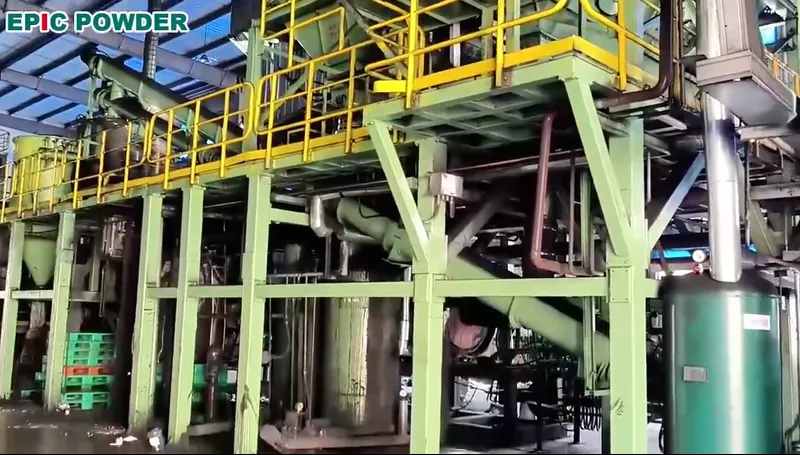In the outskirts of Tehran, Iran, an environmental enterprise specializing in waste tire recycling was facing a production bottleneck in its carbon black line. Founded in 2020, the company primarily produces recovered carbon black (rCB) through a waste tire pyrolysis process to serve local rubber product manufacturers, tire factories, and the coatings industry.
As a major tire-consuming nation in the Middle East, Iran generates more than 500,000 tons of waste tires annually. However, traditional carbon black processing technologies are limited by equipment precision, typically achieving only 200–250 mesh product fineness. This falls short of the 325-mesh (≈45 μm) requirement for higher-end applications. As a result, product added value is low, and downstream processing costs increase.
In early 2025, the company partnered with Epic Powder Machinery (EPIC Powder) to upgrade its existing pyrolysis line by introducing the MJW-L Air Classifier Mill. The objective was to achieve precise particle size control, improve product purity, and enhance competitiveness through advanced classification technology.

Process Overview
The customer’s carbon black production line adopts a continuous pyrolysis process. Waste tires are first shredded into particles (<50 mm), then heated to 500–650°C in an oxygen-free environment. Pyrolysis yields three products:
- Gas (~15%), reused on-site for power generation
- Pyrolysis oil (~40%), refined into fuel oil
- Solid carbon black (~35–45%)
In traditional setups, carbon black is cooled and magnetically separated, then screened using vibrating sieves. This results in a wide particle size distribution—average D50 ≈ 60 μm—with frequent coarse particle agglomeration that reduces reinforcement performance.
After the upgrade, the MJW-L Air Classifier Mill was integrated at the end of the production line as a key classification system. Independently developed by EPIC Powder, the equipment combines impact milling with air classification, ideal for brittle materials with Mohs hardness <3 such as carbon black.
Working Principle
Material is fed into the milling chamber via a screw feeder. The high-speed rotor (tip speed up to 200 m/s) provides impact, friction, and shear forces for initial grinding. Meanwhile, a vertically mounted classifier wheel, assisted by negative-pressure air flow, separates fine powder (<45 μm), while coarse particles return for further milling. With variable-frequency speed control (up to 8000–12,000 rpm), the system ensures stable 325-mesh product output.
Equipment Specifications & Implementation
Model: MJW-L-500 (capacity: 500 kg/h)
Key parameters:
- Milling chamber diameter: 500 mm
- Classifier wheel speed: 2000–4000 rpm adjustable
- Airflow: 2000 m³/h
- Power: 30 kW main motor, 5.5 kW classifier motor
Results After Implementation
| Key Indicator | Before (Traditional System) | After (MJW-L Air Classifier Mill) | Improvements |
|---|---|---|---|
| Product fineness | D97 ≈ 60–75 μm | D97 ≤ 44 μm (stable 325 mesh) | Fully meets customer target |
| Fineness stability | Large fluctuation | Highly stable, narrow distribution | Excellent batch consistency |
| Energy consumption | High | Significantly reduced | ~15% lower energy usage |
| Production efficiency | Low, often required secondary classification | Greatly improved | >20% capacity increase |
| Pass rate | ~85% | >98% | Major economic gains |
Customer feedback:
“Integrating the Epic Powder MJW Air Classifier Mill transformed our carbon black from a ‘low-grade recycled material’ into a ‘high-value premium alternative.’ Our products are now exported to Turkey and the UAE, with selling prices up by 30%. First-year ROI reached 180%.”
The project not only solved the particle size challenge but also revitalized Iran’s waste tire circular economy. The company plans to expand the upgrade to silica (white carbon black) production lines in the future.
